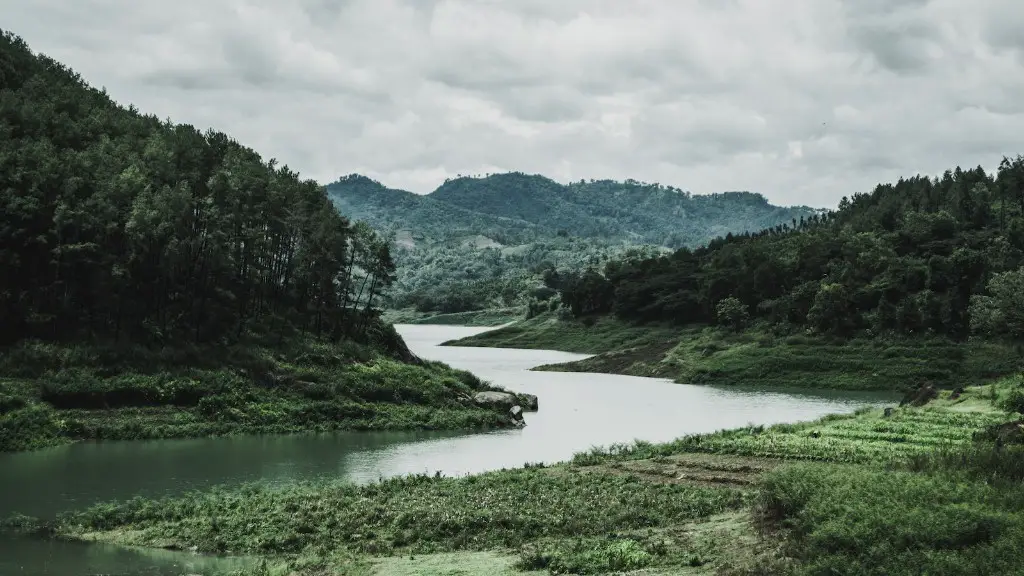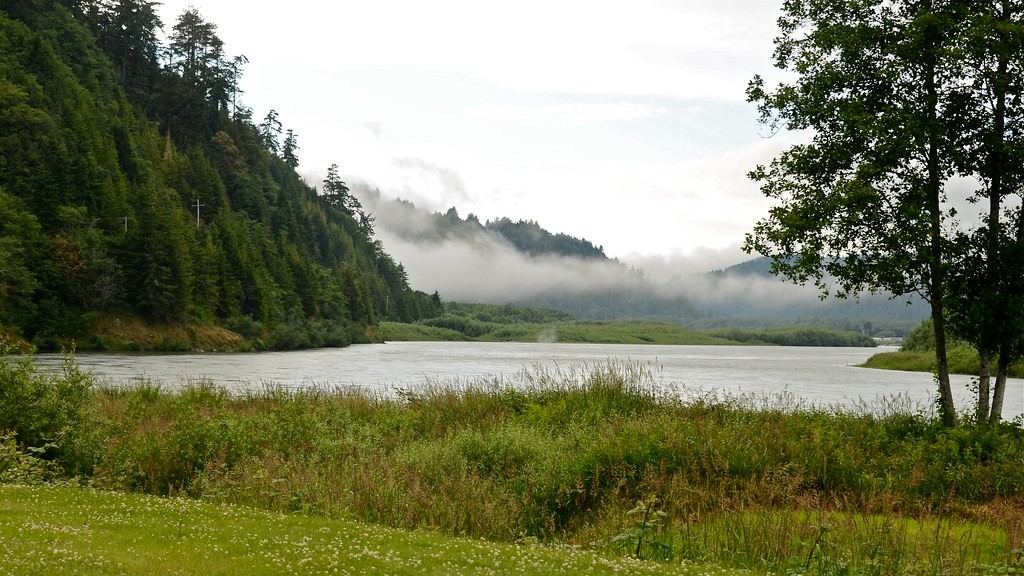The Amazon River is a major river in South America. It is the largest river by discharge volume of water in the world. It is the second longest river in the world after the Nile. It flows through the Amazon rainforest, which is the largest rainforest in the world.
The Amazon River is a vital waterway for trade and transportation in South America. It is also an important source of fresh water for the surrounding region.
Is the Amazon river used for drinking water?
The water in the Amazon River is not safe for humans to drink. The water is far too muddy and has too many biological components. If a person drank this water, they would likely get sick.
The Amazon rainforest is one of the most biodiverse places on Earth, and it’s under threat from human activities. Mining, logging, ranching, agriculture, and oil and gas extraction have put unsustainable pressure on the delicate rain forests of the Amazon Basin. These activities have led to habitat loss and fragmentation, which is devastating for the plant and animal species that call the Amazon home. The loss of the Amazon rainforest would be a tragedy for the planet, and we must do everything we can to protect this vital ecosystem.
Is the Amazon river used for transportation
The Amazon River is still a primary mode of transportation for many individuals, particularly the indigenous people, according to The Nature Conservancy. The river is a lifeline for these communities, providing them with access to essential goods and services. However, the river is also under threat from pollution and over-exploitation. The Conservancy is working to protect the Amazon and its communities by promoting sustainable development and management of the river.
Fishing is an important source of income and food for many riverside communities in the Amazon River Basin. In Brazil, the region’s potential for fish production is estimated to be as high as 1 million tons per year, which is equivalent to half of the total fish production from the country’s rivers and lakes. The Amazon River Basin is home to a diversity of fish species, and the region’s warm climate and abundant rainfall provide ideal conditions for fishing. In addition, the Amazon River Basin is home to a large number of indigenous peoples who have traditionally relied on fishing for their livelihoods.
Can you swim in the Amazon river?
The Amazon is one of the most exciting and diverse swimming spots in the world. With around 60,000km of inland waterways, countless lakes, lagoons and beaches, the Amazon is a great place to swim. There are many different types of fish and other wildlife to see, and the Amazon is a great place to explore.
The Amazon River is the longest river in the world, and it has a depth of around 20 to 50 meters (66 to 164 ft) in most parts. However, there are some parts of the river where the depth plunges to around 100 meters (330 ft).
What are 5 benefits of the Amazon rainforest?
The Amazon rainforest affords the planet with irreplaceable ecosystem services that are increasingly being recognized by researchers and policymakers. By providing services such as precipitation, carbon storage, and biodiversity, the Amazon rainforest plays a vital role in sustaining life on Earth. In addition, the Amazon rainforest provides local benefits to the people who live there, including food, water, and shelter. As the threats to the Amazon rainforest increase, it is becoming increasingly important to protect this critical ecosystem.
The Amazon rainforest is one of the most important ecosystems on the planet. Not only is it a major source of food, water, wood, and medicines, but it also helps to stabilise the climate. Around 76 billion tonnes of carbon is stored in the Amazon rainforest, and the trees release 20 billion tonnes of water into the atmosphere each day. This plays a critical role in the global and regional carbon and water cycles.
What are 3 facts about the Amazon river
The Amazon River is one of the longest and most well-known rivers in the world. Here are 15 facts about the Amazon River that you may not know:
1. The Amazon River originates in Peru.
2. The Amazon River System meanders through nine South America countries.
3. A Slovenian athlete once swam almost the entire length of the Amazon River in 66 days.
4. The Amazon River provides 20% of the ocean’s fresh-water supply.
5. The Amazon River is home to the world’s largest rainforest.
6. The Amazon River is also home to the world’s largest river dolphin.
7. The Amazon River is home to the world’s largest beetle.
8. The Amazon River has the world’s largest river island.
9. The Amazon River has the world’s largest waterfall.
10. The Amazon River is the world’s deepest river.
11. The Amazon River is the world’s most heavily trafficked river.
12. The Amazon River is the world’s widest river.
13. The Amazon River has the world’s largest river system.
14. The Amazon River has the world’s largest
The Amazon River is an important transportation system for many exports of natural resources. There are no roads in the area because of the dense vegetation. However, companies are building roads and pipelines to transport the oil and gas out of the region for commercialization. Tourism is also an important component of the economy in the Amazon region.
What countries rely on the Amazon river?
The Amazon and its tributaries flow through a total of six countries before emptying into the Atlantic Ocean. These countries are Peru, Bolivia, Venezuela, Colombia, Ecuador, and Brazil. The Amazon River is one of the longest rivers in the world, with a length of 6,437 kilometers (4,000 miles). The Amazon River is an important waterway for trade and transportation in the region.
The Amazon River Basin is an important source of natural resources for human economic development. It contains some of the world’s largest known reserves of bauxite (nearly 15% of the world total), and industries within the Basin are some of the largest suppliers of iron and steel to world markets. The Amazon River Basin is also an important source of timber and other forest products.
Is the Amazon river saltwater
The Amazon, like almost all the rivers in the world, is freshwater. It discharges more freshwater into the ocean than any other river. The Amazon is also one of the longest rivers in the world, with a length of over 6,400 kilometers. The Amazon basin, which is the area drained by the Amazon River, covers approximately 7 million square kilometers, or about one-fifth of the total area of South America.
The arapaima is a giant fish that can grow up to 10 feet long and weigh up to 400 pounds. It is the largest scaled freshwater fish in the world. The fish has a large, elongated body and a long, thick tail. It is covered in large, thick scales that are hard and tough to the touch. The arapaima has a large mouth with sharp teeth. Its eyes are small and its head is large and flat.
The arapaima is native to the rainforests of the Amazon Basin in South America. It is also found in nearby lakes and swamps. The fish is an opportunistic feeder and will eat just about anything it can fit into its large mouth. The arapaima is an air-breathing fish and must surface every few minutes to breathe.
The arapaima is a popular game fish and is heavily hunted. The fish is also raised in aquaculture operations. The meat of the arapaima is white and flaky and is considered a delicacy in some parts of the world.
What is the biggest fish in the Amazon river?
The pirarucu is a giant freshwater fish that is found in the Amazon rainforest. It can weigh up to 200 kilos (440 pounds) and is the largest of all the known freshwater fish species in the world. Thepirarucu is an important fish for the local people of the Amazon and is a key part of their diet. The fish is also a popular target for sport fishing, as it is a strong and powerful fish that puts up a good fight when caught.
The Amazon River is home to a huge diversity of fish, with over 5,600 different species living in its warm waters. The average water temperature in the river is in the mid to upper 80’s (Fahrenheit), which is ideal for many species of fish. Some of the most famous residents of the Amazon River include catfish, eels, bull sharks, and piranha.
Conclusion
The Amazon River is used for transportation, irrigation, drinking water, and power generation.
The Amazon River is used for transportation, irrigation, and energy production.





